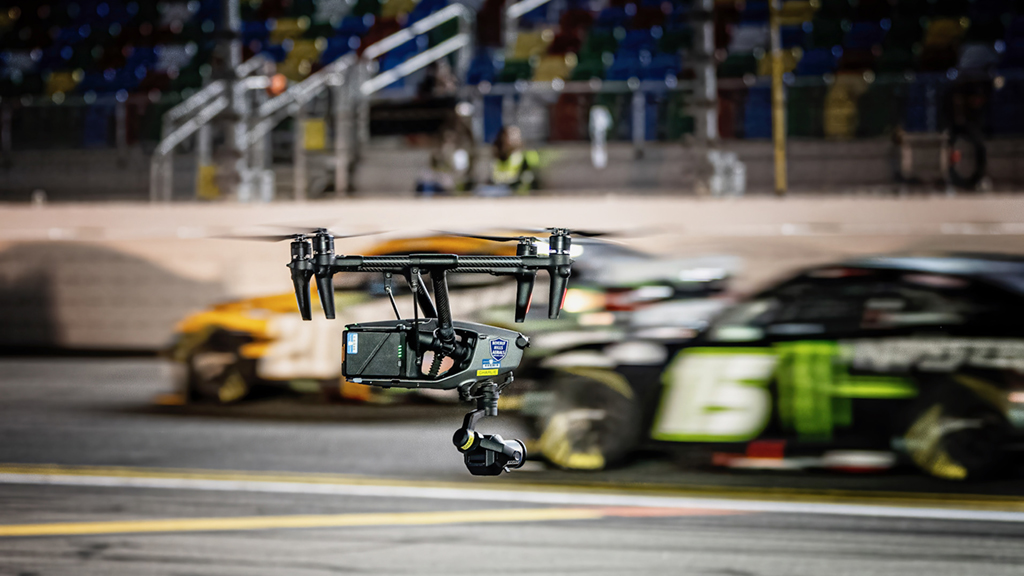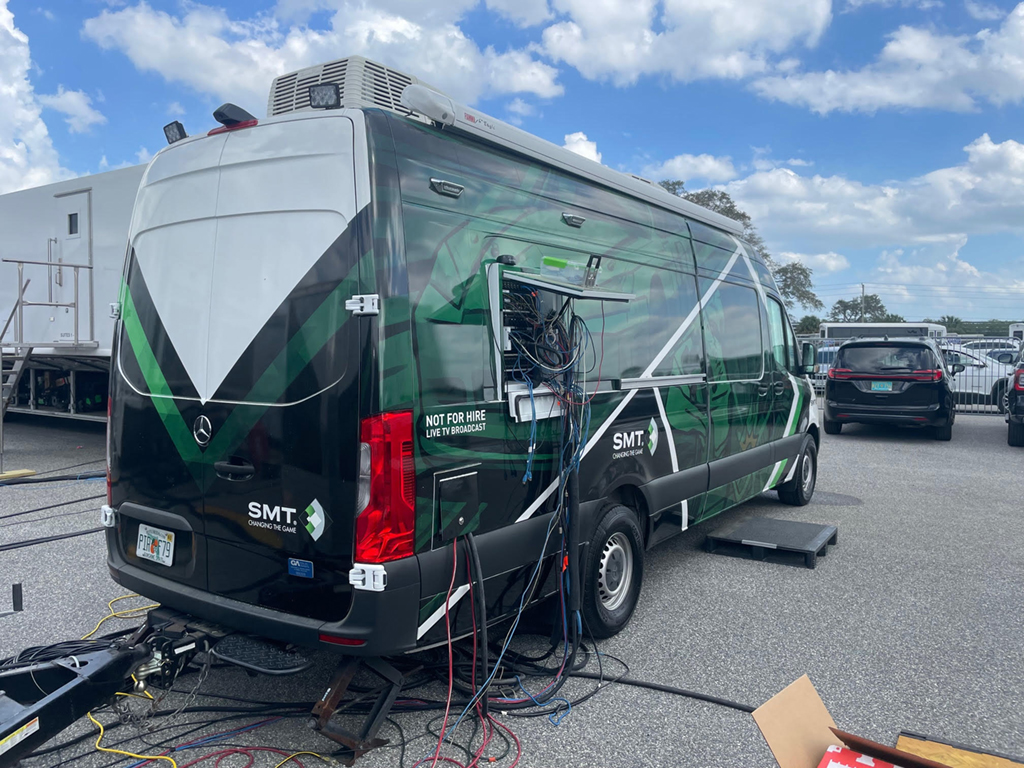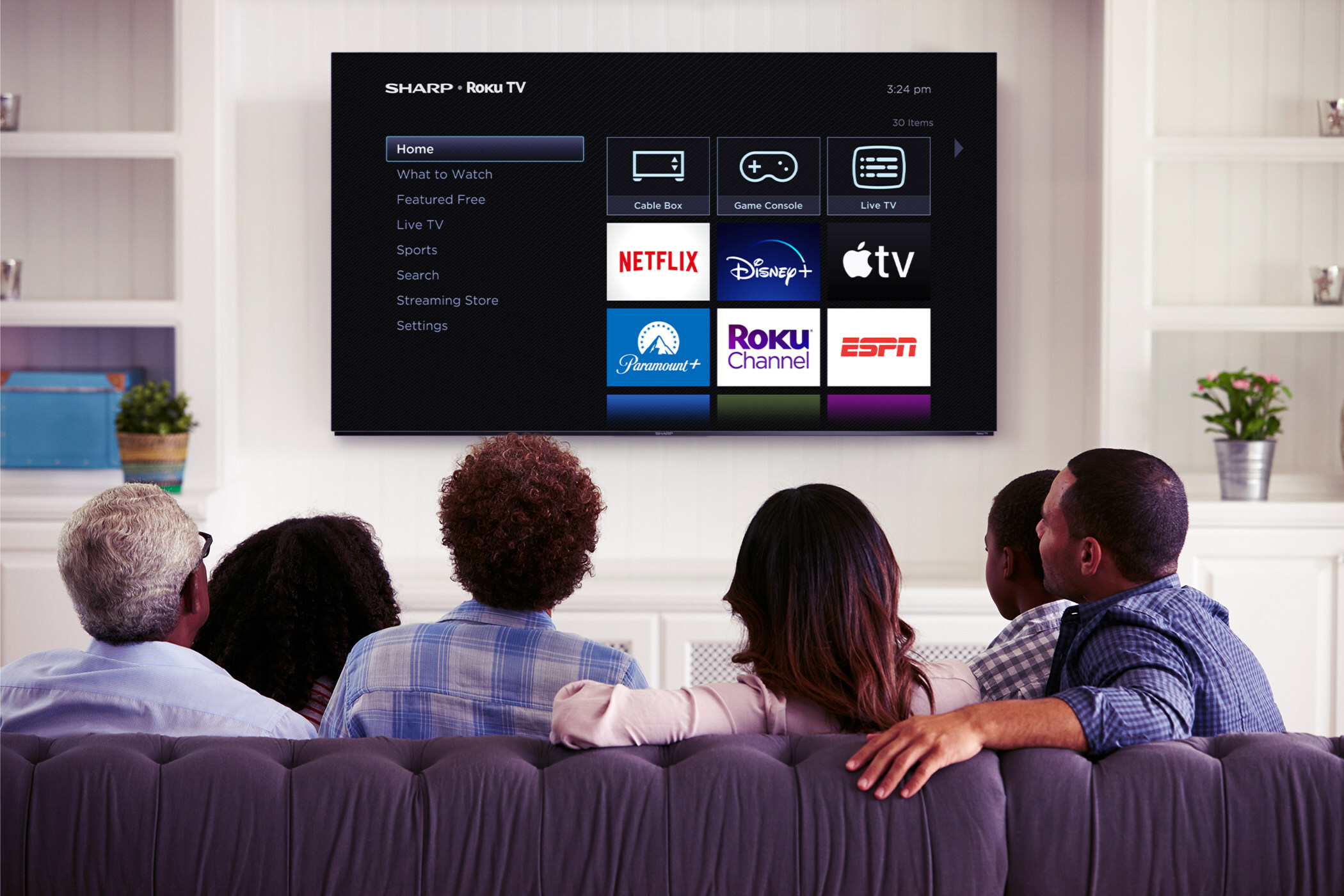Fox Sports Revs Up for Daytona 500 With New NASCAR Deal, Some New Tech
Broadcaster adds Cosm cameras and will integrate heavy-lift drone into production

DAYTONA, Fla.—The Fox Sports production of this year’s Daytona 500 will see the addition of a few new tech elements and the continued unfolding of the broadcaster’s quest to realize additional workflow efficiencies while enhancing quality.
(The Daytona 500 begins Sunday, Feb. 16, at 2:30 p.m. EST. It will be broadcast live on Fox and the Fox Sports app. Live streamers can watch via YouTube TV, Sling TV, Hulu + Live TV and Fubo.)
As it did during the Super Bowl on Feb. 9, Fox Sports will introduce Cosm super-wide-angle cameras into its race coverage, working with the entertainment dome experience specialist on where best to place them around the 2.5-mile track. The broadcaster, which also plans to add a heavy-lift drone with a full-size camera and lens, will rely on new optically generated tracking data from NASCAR to drive its SportsMEDIA Technology (SMT) graphics, Michael Davies, executive vice president of technical and field operations at Fox Sports, said.
This Sunday’s race, the first time Fox Sports will cover the Daytona 500 under a new seven-year contract with NASCAR, “doesn’t change that much in what we put on air,” Davies said. It does mark the beginning of a new chapter that will see Fox Sports, NBC Sports, Amazon Prime Video and TNT Sports carry all 38 NASCAR Cup Series races through 2031. (The Feb. 2 Busch Light Clash at Bowman Gray Stadium in Winston-Salem, North Carolina, is regarded as a preseason race.)
The deal divides distribution among the entities. “On any given weekend, you’re going to have Fox on [NASCAR] Cup; Amazon on practice and qualifying; The CW Network on the Xfinity race; and [TNT Sports] doing the in-cars,” Davies said. (Fox Sports and NBC Sports will each carry 14 NASCAR Cup Series races. Prime Video and TNT will split the 10 remaining midseason races.)
Fox Sports, which will produce its coverage in 1080p high dynamic range (HDR), in some instances will produce the shows for other networks and in others will hand off various feeds. “In a raw technological sense, it really doesn’t make a lot of difference when you are sitting in the truck and actually producing the show,” Davies said. “It’s really just the downstream proliferation of everything that’s going to be different.”
The Spectacle
The Daytona 500 is considered a spectacle because it’s the biggest race in NASCAR with fans and dignitaries, such as former Presidents Ronald Reagan and George W. Bush, often in attendance. “If you look online, President [Donald] Trump may or may not be at this one as well,” Davies said.
Get the TV Tech Newsletter
The professional video industry's #1 source for news, trends and product and tech information. Sign up below.
Regardless, Fox Sports will treat the production like a spectacle, erecting a stage just as it does for the Indianapolis 500 and Super Bowl. “Daytona commands a real pregame presence that we don’t do for other races,” he said. “You’ve got the grand marshal, the national anthem and the flyover. It’s a big buildup, not unlike the Super Bowl. We won’t do six and a half hours of pregame programming like the Super Bowl, but we’re doing quite a bit with our own stage and crew focused on pregame.”
Newly added Cosm cameras will help the broadcaster capture that spectacle for viewers. Unlike at the Super Bowl, the super-wide angle of the cameras’ shots may not simply be used after being de-warped and selecting a 16-by-9 area of interest for TV viewers, Davies said.
“Maybe some of these cameras look good as they are. I think this is just one of those wait-and-see items. We might be able to use them in a couple of ways,” Davies said during an interview conducted midweek before the race.
One of the ways he is considering taking advantage of the cameras’ wide viewpoint is to capture as many as six or seven pits in the same shot. While the broadcaster normally uses a traditional broadcast camera with a wide-angle lens to capture pit stops, the extra-wide angle of the Cosm camera’s viewpoint will enable the broadcaster to capture more, he said.
“One of the things I like about working with those guys is it’s never a totally separate production [one for Fox and one for presentation at a Cosm Dome in Dallas and Los Angeles],” Davies said. “There’s always the middle of a Venn diagram—the crossover—where both of us can enjoy what we’re putting out.”
The heavy-lift drone, another new addition, will complement the FPV and other drones deployed to cover the race. “We’ve done it before on some races, but we’re going to employ the heavy-lift drone with a big-boy camera and real lens at Daytona to get additional coverage that adds into the fact that this is a bigger race,” he said.
One significant technical change viewers will not notice on-air is NASCAR’s use of a new system based largely on optical technology rather than GPS to gather accurate tracking data for Fox Broadcast graphics. “We’re still going to use the SMT to render those graphics, but under the hood is something completely different,” he said.
Production Efficiencies
For this year’s “Great American Race,” Fox Sports has rolled eight trucks to the Daytona International Speedway, fewer than in the past and a continuation of a downward trend, Davies said.

“Ten years ago, there were 10 additional trucks in the compound to do, roughly speaking, what is happening now,” Davies said, adding that ESPN was also involved at the time.
“It was a massive compound,” he said.” You had the shared resources and RF trucks right in the middle. Then on one side you had ESPN land and on the other side Fox land,” pointing out that those shows were produced in 720p, not 1080p as will be done this year.
The point, however, isn’t simply to reduce the expense of on-site production trailers, but also to streamline workflows and save on the expense of certain personnel, who can work remotely on race coverage.
“I’ll give you several instances [of remote personnel working on the production],” he said. “We have replay people working both in Pittsburgh and in California. We have some graphics people in Pittsburgh. We also have racing radio editors and producers who work from their homes. And we have our race editor working from home as well.”
An edit room equals about one-quarter of a production trailer. The space needed to edit racing radio takes up another quarter. These and other reductions begin to add up and enable the broadcaster to remove entire trailers or downsize to a smaller vehicle, as Fox Sports is doing this year by replacing a trailer dedicated to graphics with its remote personnel and those working in the van devoted to SportsMEDIA Technology graphics, Davies said.
Among the biggest reasons Fox Sports has been able to reduce how many OB vehicles it sends to produce races is the availability of fiber-optic connectivity at NASCAR tracks, eliminating latency concerns, he said.
“[For a time], not all [the tracks] were fiber,” he said. “But we spent some money and got them all fiber. Obviously, we’re now reaping the gains from that.”
Phil Kurz is a contributing editor to TV Tech. He has written about TV and video technology for more than 30 years and served as editor of three leading industry magazines. He earned a Bachelor of Journalism and a Master’s Degree in Journalism from the University of Missouri-Columbia School of Journalism.

